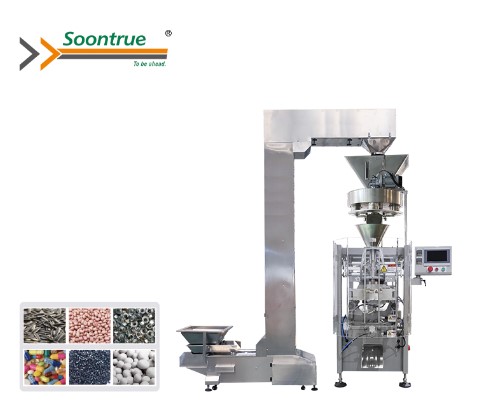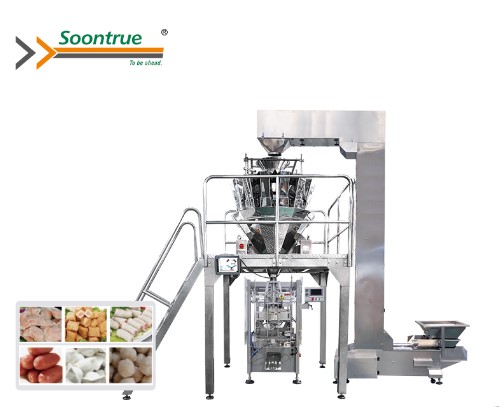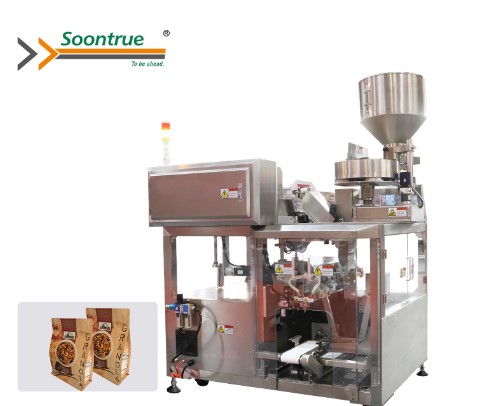What Should Consider Before Buying A Vertical Packing Machine?
In the realm of packaging machinery, vertical packing machines play a pivotal role in efficiently packaging various products. From food to pharmaceuticals, these machines provide a streamlined approach to packaging while maintaining precision, speed, and dependability. However, investing in a vertical packing machine requires careful consideration to ensure that it aligns with your specific requirements and business objectives. In this article, we delve into the essential factors to ponder before making a purchase decision.
Understanding Vertical Packing Machines
Before delving into the considerations, let’s briefly understand what vertical packing machines are and their significance in the packaging industry.
Vertical packing machines, also known as vertical form fill seal (VFFS) machines, are automated packaging systems primarily used to package solid products such as granules, powders, liquids, or pastes. These machines create packages from a flat roll of packaging material, fill them with product, and then seal them vertically. The versatility and efficiency of vertical packing machines make them indispensable in a wide range of industries, including food and beverage, pharmaceuticals, cosmetics, and more.
Factors to Consider Before Buying a Vertical Packing Machine
Packaging Requirements and Product Characteristics
Before purchasing a vertical packing machine, it's crucial to assess your packaging requirements and the characteristics of the products you intend to package. Consider the product's size, shape, weight, and consistency. Different items may necessitate specific packaging materials and configurations, and the machine should be able to accommodate these differences. For instance, delicate products may necessitate gentler handling mechanisms to prevent damage during the packaging process.
Packaging Speed and Output
The packaging speed and output capacity of the vertical packing machine are critical considerations, especially for high-volume production environments. Evaluate your production requirements and specify the desired packaging pace in packages per minute (PPM) or units per hour. Ensure that the machine's speed capabilities align with your production targets to avoid bottlenecks and inefficiencies in the packaging line.
Packaging Material and Film Type
Vertical packing machines are compatible with various types of packaging materials, including polyethylene (PE), polypropylene (PP), laminates, and more. The choice of packaging material depends on factors such as product characteristics, shelf life requirements, and aesthetic preferences. Additionally, consider the type and quality of the film used for packaging, as it can impact the overall appearance, durability, and preservation of the packaged products.
Machine Flexibility and Versatility
A versatile vertical packing machine offers the flexibility to accommodate different packaging formats, sizes, and configurations. Consider whether the machine can accommodate changeable bag lengths, several fillers for various goods, and quick changeover capabilities to reduce downtime during product transitions. Versatility is key to adapting to evolving market demands and expanding product lines without significant investment in additional machinery.
Packaging Seal Integrity and Quality
The seal integrity of packaged products is paramount to ensure freshness, hygiene, and product protection throughout the distribution and storage process.Evaluate the sealing mechanism of the vertical packing machine, including heat sealing, ultrasonic sealing, or impulse sealing, to determine its effectiveness in creating strong and consistent seals. Conduct seal integrity tests to verify the machine's performance under various operating conditions and environmental factors.
Ease of Operation and Maintenance
A user-friendly interface and intuitive controls enhance the operational efficiency of the vertical packing machine while reducing the likelihood of errors and downtime. Consider how accessible critical components are for cleaning, maintenance, and troubleshooting. In addition, inquire about the availability of technical support, training resources, and spare parts to ensure continuous operating reliability and avoid production disruptions.
Footprint and Space Constraints
The physical footprint of the vertical packing machine is another important consideration, especially if you have limited space in your production facility. Measure the available space and assess whether the machine can be integrated seamlessly into your existing packaging line layout. Some vertical packing machines offer compact designs or modular configurations that optimize space utilization without compromising performance.
Total Cost of Ownership (TCO) and Return on Investment (ROI)
Assessing the total cost of ownership (TCO) involves considering not only the upfront purchase price of the vertical packing machine but also ongoing operating costs, maintenance expenses, and potential productivity gains. Conduct a thorough cost-benefit analysis to determine the machine's return on investment (ROI) across its life cycle. To establish the investment's long-term economic sustainability, consider aspects such as energy efficiency, reduced material waste, labor savings, and scalability.
Conclusion
Investing in a vertical packing machine requires a thorough assessment of various factors to ensure optimal performance, reliability, and compliance with industry standards.Remember to collaborate with reputable suppliers like Soontrue and leverage their expertise to navigate the complexities of selecting the right vertical packing machine for your specific application.





